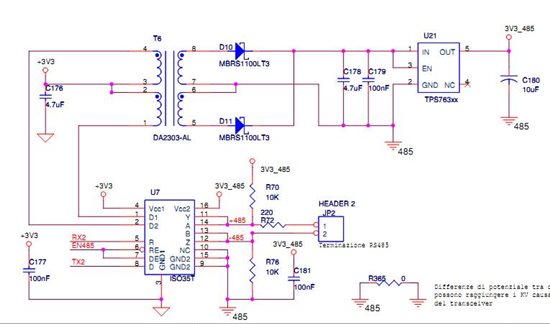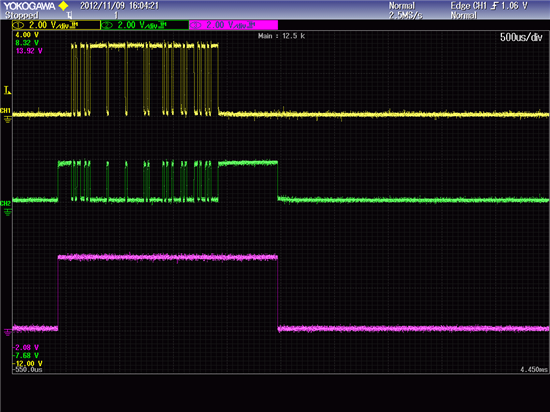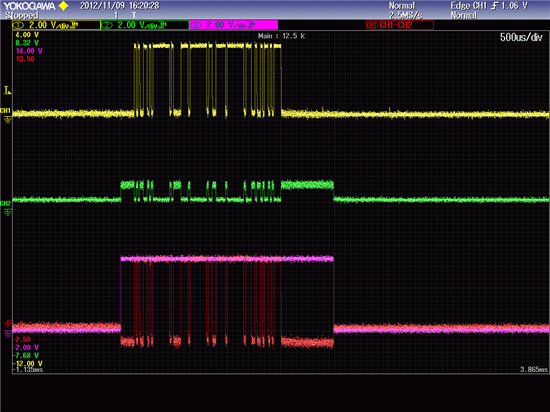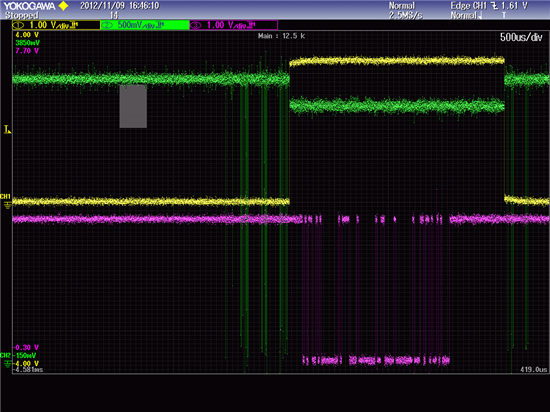Dear all,
I am experiencing a high death of the ISO35T driver line. I use the ISO35T in half duplex mode with the pin Y connected to a with a 10K pull-up (3.3V) and the pin B connected to Z with a 10K pull-down. Usually when the line is broken, I see that the Y-A line can not reach a high impedance state. I wonder whether it is a bad lot or there is some other problem. I checked the PCB and it looks fine.
Another thing I notice is a small interference of the enable signal (pin 6-7) in the Rx (pin 5).
Thank you in advance





